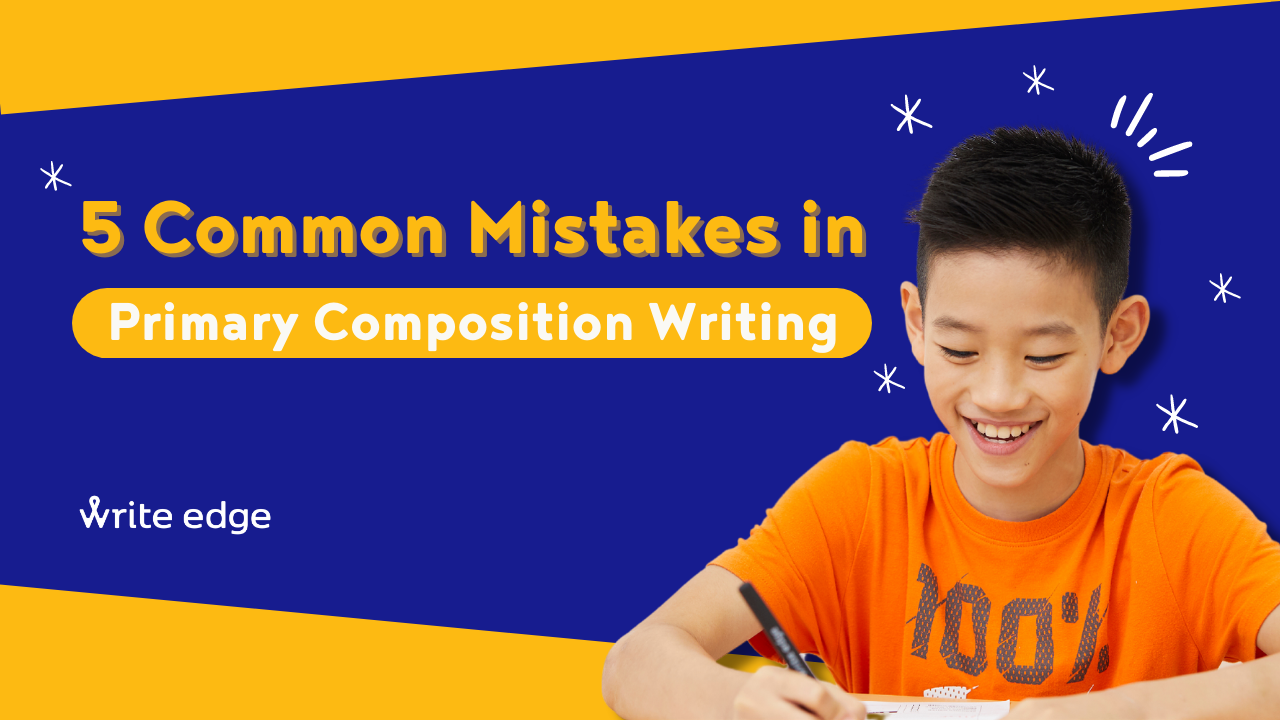
Making mistakes in writing may be mortifying for many of us, but it need not be so. Fixing these mistakes and making a conscious effort to not repeat them is, however, priority. Here are 5 of the most common mistakes primary school students make while finding their feet on their writing journey.
Mistake #1: Insipid Introductions and Conclusions
Want to pack a punch with a captivating start? Only powerful introductions produce that effect because they provide the first glimpse into a story as it progresses. Students, despite having been exposed to writing techniques involving story starters, often find it a challenge to craft a powerful start. As a result, their introductions fail to capture the interest of readers. Flowery weather descriptions unrelated to the story setting, superfluous sound effects, purposeless speeches, and flashbacks that are not triggered by events and senses are some very shaky starters. As for conclusions, a comprehensive one leaves a lasting impression. Sadly, students usually rush through conclusions due to lack of time and imagination. By including only a ‘lesson learnt’, students tend to wrap up stories without reflecting deeply on the protagonist’s experience. Such abrupt endings leave readers unsatisfied as they wonder if there is more to the story.
How to fix it
One simple way to counter this mistake is to actively read stories written by authors and put those introductions into practice in creative writing. For conclusions, a set of questions to trigger an in-depth reflection process can be initiated. Paying close attention to concluding dialogues and scenes in movies is another way to free one’s imagination.
Mistake #2: Disappointing Descriptions
Descriptions are the soul of writing. Apart from arousing vivid imagery in readers’ minds, they help to dissect every scene to the last detail. In their absence, the plot will appear stilted and under-developed. Descriptions are best captured by 5 Senses and Show-Not-Tell expressions. However, most students exhibit a lackadaisical attitude towards invoking them and bringing the story alive. The result? A colourless portrayal of events listed down like a shopping list. Students ‘tell’ rather than ‘show’ the events. The climax, despite being the most gripping segment, is devoid of any exciting details. Character’s thoughts – a very useful writing technique that allows readers to identify with the character – are underused. To top it all off, students resolve the conflict quickly and conveniently without much active involvement of the protagonist. What eventually results is a lacklustre writing piece.
How to fix it
Acronyms and checklists coined for this purpose can stimulate elaboration of details because students will remember the sequence of events to carry out the breakdown of scenes. Dramatisation is another huge game-changer, especially for younger students. Once a scene is enacted, it is easier to visualise it for the writing process. In the case of virtual primary creative writing lessons, movies and video clips will do the trick to prompt visualisation and breaking down of scenes.
Mistake #3: Sloppy Sentence Structures
Well-crafted sentence structures infuse life into writing and hold the reader’s attention. However, primary school students typically use a subject-verb structure and predictably link sentences with common conjunctions like ‘and’. Run-on sentences, which are exceedingly long sentences without punctuation marks or appropriate connectors separating the clauses within, are another big turn-off. Repetitive sentence structures create monotony.
How to fix it
Students should be encouraged to read through their writing in order to highlight or underline the first word in each sentence. Once they become aware of the tedium of their sentence structures, they will subsequently become more open-minded to modifying them with conscious effort. By guiding them to use alternative sentence starters like time connectors, transition words and conjunctions, their writing will ultimately take a big leap.
Mistake #4: Vexing Vocabulary
As part of effective writing, students are often reminded to use impactful vocabulary. While nobody can belittle the importance of good vocabulary in writing, how we use them effectively to produce the desired effect is more critical. Unfortunately, students generally memorise bombastic vocabulary to impress readers without giving much thought to its relevance. When they do not understand the vocabulary themselves, it is little wonder that its application is out of context. Such flowery phrases may sound good to the ears, but in effect, they diminish rather than enhance the creative writing. The extra word count invested in this becomes a waste of time!
How to fix it
The quick fix is for students to critically examine the paragraphs of their composition once it is complete. Not only can they fix any misapplied vocabulary, but also trim their sentences to convey the message distinctly in the process.
Mistake #5: Awkward Application of Grammar and Punctuation
Grammar and punctuation are the very foundation of any language. Any written or oral communication will appear garbled in the absence of correct grammar and punctuation. Primary school students who are unclear about grammar and punctuation rules will struggle creating coherent sentences. Common mistakes include subject-verb agreement, tenses, commas and speech marks. Constructive punctuation like hyphens and semicolons do not appear in these students’ creative writing pieces.
How to fix it
Grasping grammar and punctuation rules is the first step to remedying the problem, while proofreading one’s written work to spot and fix these errors independently is the next. With constant practice, it is only a matter of time before students gain confidence in writing error-free sentences.
Henry Ford, the owner of Ford Motor Company, once said, “The only real mistake is the one from which we learn nothing.” At Write Edge, all students, including those attending online lessons for primary creative writing, are exposed to well-researched writing techniques that elevate their writing skills. They do not shy away from making mistakes. Consequently, they learn to fix them and grow as a writer.
If you wish to find out more about the creative writing programme at Write Edge, feel free to reach out to us to arrange a trial class to find out more.
© Write Edge – All Rights Reserved